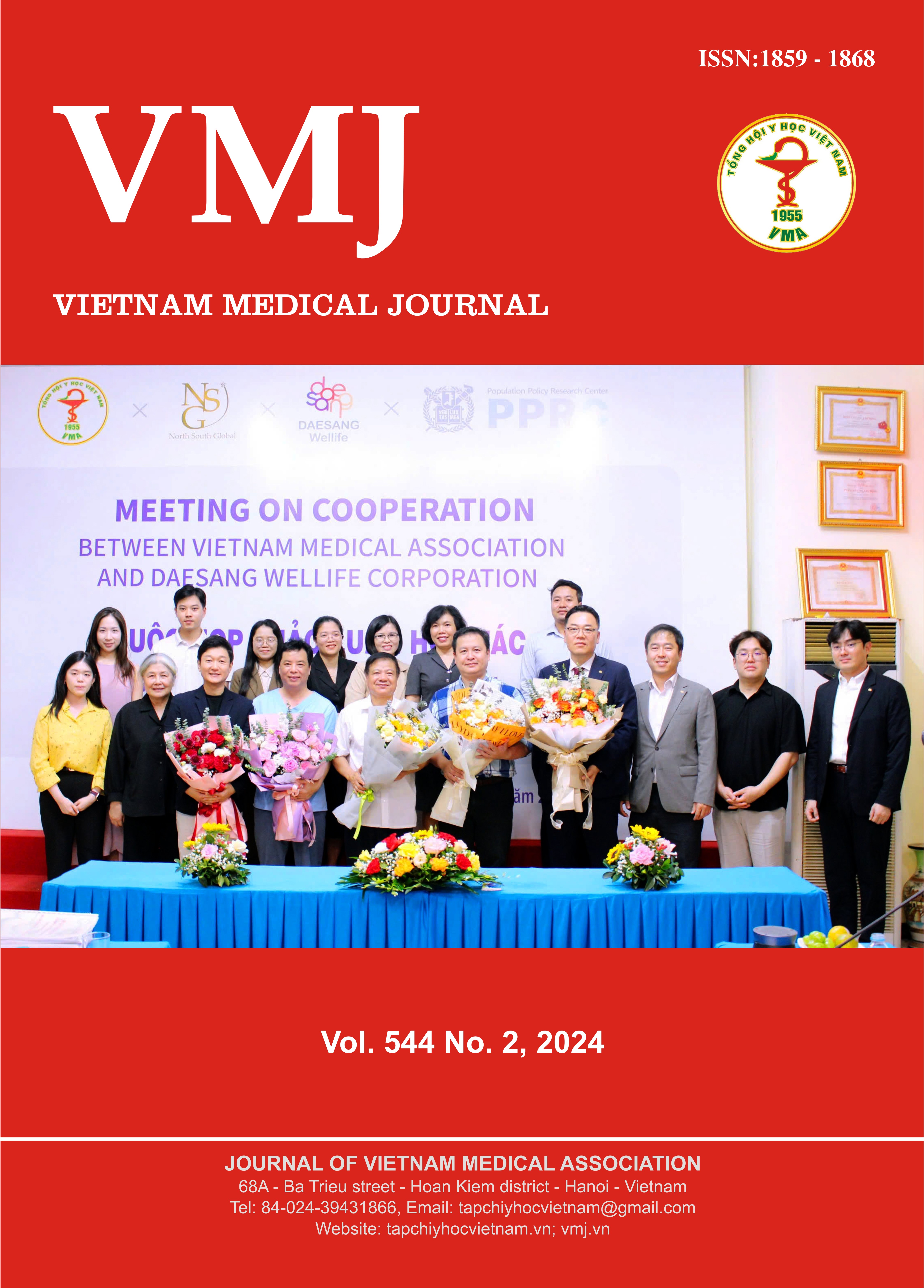CHRONIC COUGH TREATMENT USING MODERN FORMULATION OF THE VIETNAMESE TRADITIONAL COUGH-RELIEVING REMEDY “BAI BU BU FEI TANG”
Main Article Content
Abstract
In tropical countries like Vietnam, due to the geographical conditions, the cough is one of the commonest diseases. Current cough treatments rely mainly on the use of chemical-synthesized drugs, which present several disadvantages due to a the drug resistance phenomenon, allegy and occasional side effects. Therefore, developing of a safe and effective strategy for cough treatment is in an urgent need. Among protential alternatives, traditional medicine is drawing an increasing attention from the scientific community because of its therapeutic efficacy and safety. Therefore, this study was performed to develop a novel formulation of “Bai Bu Bu Fei Tang” for treatment of chronic cough in Vietnam, comprising of Radix Stemonae, Radix platycodi, Radix Ophiopogonis japonica, Radix et Rhizoma Glycyrrhizae, Fructus Terminaliae chebulae and Herba Pouzolziae zeylanicae.
Article Details
Keywords
Bai Bu Bu Fei Tang, cough-relieving lozenge, modernization of traditional medicine
References
2. Goldsobel AB, Chipps BEJTJop. Cough in the pediatric population. 2010;156(3):352-8. e1.
3. Chung KF, Widdicombe JGJHoep. Pharmacology and therapeutics of cough. Preface. 2009(187):v-vi.
4. Schappert SM, Burt CWJV, Health Statistics. Series 13 DftNHS. Ambulatory care visits to physician offices, hospital outpatient departments, and emergency departments: United States, 2001-02. 2006(159):1-66.
5. Phạm Xuân Sinh, Bình PH. Dược học cổ truyền. Hà Nội: Nhà xuất bản y học; 2002.
6. Tào Duy Cần, Quang HT. Phương thang y học cổ truyền. Hà Nội: Nhà xuất bản y học 2009.
7. Beinfield H, Korngold E. Between heaven and earth: A guide to Chinese medicine: Ballantine Books; 2013.
8. Choursiya S, Andheriya DJJoDD, Therapeutics. Review on lozenges. 2018;8(6-A):124-8.
9. Kolap MB, Omase PK, Dashwant AV, Namde RSJRJoP, Pharmacodynamics. Review on lozenges. 2021;13(2):75-8.
10. Verma A. Review on Lozenges. RAPSR Journal der Pharmazie Forschung. 2014;2:1-10.
11. Ceron‐Litvoc D, Soares BG, Geddes J, Litvoc J, Lima MSdJHPC, Experimental. Comparison of carbamazepine and lithium in treatment of bipolar disorder: a systematic review of randomized controlled trials. 2009;24(1):19-28.
12. Peters DJPDFT, 2nd Ed., Lieberman H, Lachman, L., Schwartz, JB, Eds. Medicated lozenges. 1989:419-63.
13. Pothu R, Yamsani MRJI. Lozenges formulation and evaluation: A review. 2014;1:290-4.
14. Chandrawanshi Mayuri J, Sakhare R, Nagoba Shivappa N, Bhalekar Rohini V. A REVIEW ON MEDICATED LOZENGES. 2018.
15. Bộ Y Tế. Dược điển Việt Nam V. Tập 2. 2017.
16. Anand B, Thomas I, Beena P, Abraham E. Formulation and Evaluation of Herbal Lozenges Containing Eucalyptus Oil and Coleus Aromaticus Oil. 2018.
17. Chen M, Zhang W, Wu H, Guang C, Mu W. Mannitol: physiological functionalities, determination methods, biotechnological production, and applications. Applied Microbiology and Biotechnology. 2020;104(16):6941-51.


